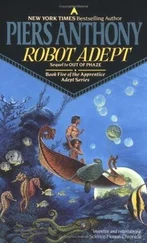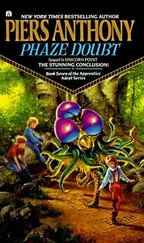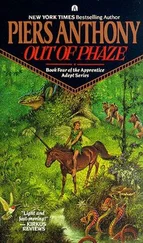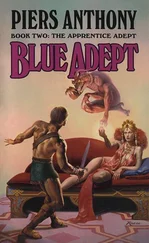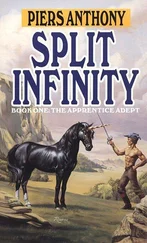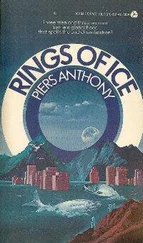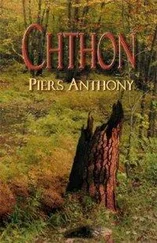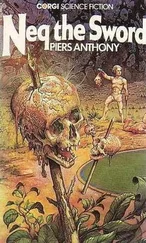They cut into the reef. This time Don observed the myriad creatures of this specific locale, and the reef began to align better with his former mental image. The elements were there, just not quite the way he had pictured them. The fish in the open waters had generally stayed clear of the odd bicycle party, probably frightened by the lights and machinery, so that he had ignored them with impunity. But this stony wall was well populated. Yellow-eyed snakes peeped from crevices, teeth showing beneath their nostrils, watching, waiting.
Beside him, Melanie seemed no more at ease. She tried to keep as far from the reef as possible without separating from the human party.
Gaspar saw their glances. “Moray eels,” he said. “No danger to us, phased—but if we were diving, I’d never put hand or foot near any of these holes. Most sea creatures are basically shy, or even friendly, and some of the morays are too. But they can be vicious. I’ve seen one tackle an octopus. The devilfish tried to hide, but the moray got hold of a single tentacle and whirled around until that tentacle twisted right off. Then it ate that one and got hold of another.”
“Why didn’t you do something?” Don asked. He had no love of octopi, which were another group of childhood nightmares, but couldn’t bear the thought of such cruelty.
“I did,” Gaspar admitted. “I don’t like to interfere with nature’s ways, but I’m not partial to morays. Actually the thing took off when I came near. Good decision; I would have speared it.”
“The-the octopus. Did you have to—kill it? With two arms off—”
“Course not. Tentacles grow back. They’re not like us, that way.”
“I guess not,” Don agreed, looking again at the morays. They might not be quite in his phase, but he would keep clear of them regardless. Certainly there were prettier sights. He spied zebra-striped fish, yellow and black (juvenile black angelfish, Gaspar said), red fish with blue fins and yellow tails (squirrelfish), purple ones with white speckles (jewelfish), greenish ones with length-wise yellow striping—or maybe vice versa (blue-striped grunt), and one with a dark head, green tail, with two heavy black stripes between (bluehead wrasse). Plus many others he didn’t call to Gaspar’s attention, because he tended to resent the man’s seemingly encyclopedic nomenclature. Melanie seemed similarly fascinated, now that they had gotten among the pretty fish instead of the ugly eels.
“Good thing you didn’t ask me any of the difficult ones,” Gaspar said. “There’s stuff in these reefs I never heard of, and probably fish no man has seen. New species are discovered every year. I think there are some real monsters hidden down inside.”
But the surface of the coral reef was impressive enough. They passed a section that looked like folded ribbon (stinging coral-stay clear), and marveled at its convolutions.
Then the reef rounded away, and they pedaled through. Melanie almost bumped into a large ugly green fish and shied away, still not completely used to the phaseout. But that reminded Don of something.
“We ride on the bottom because that’s inanimate,” he said. “The living things are phased out. But aren’t the coral reefs made by living creatures? How come they are solid to us, then?”
“They’re in the phase world,” Gaspar said. “They’re part of the terrain. They may not be the same reefs we see, but they’re just like them. So we have to take them seriously. Otherwise we could have ridden straight through them, and saved ourselves a lot of trouble.”
Of course that was true. Don was chagrined for not seeing the obvious.
They climbed into the shallows, passing mounds and ledges and even caves in the living coral. For here it was not rocklike so much as plantlike, with myriad flower-shapes blooming.
Gaspar halted as the ground became too uneven to ride over. “Isn’t that a grand sight?” he asked rhetorically. “They’re related to the jellyfish, you know. And to the sea anemones.”
“What are?” Don asked, perplexed.
“The coral polyps. Their stony skeletons accumulate to form the reef—in time. Temperature has to be around seventy degrees Fahrenheit or better, and they have to have something to build on near the surface, but within these limits they do well enough. They strain plankton from the water with their little tentacles—”
“Oh? I didn’t see that,” Melanie said, finally speaking. Apparently her revelation of her condition had set her back as much as it had Don, and she had withdrawn for a time. Now she was returning, and maybe it was just as well.
“They do it at night, mostly,” Gaspar explained. “We’re seeing only a fraction of the fish that live on the reef; night is the time for foraging.”
“You certainly seem to know a lot about sea life,” Melanie said. “Are you sure you’re a geologist?”
Gaspar laughed. “You have to know something about the flora and fauna, if you want to stay out of trouble. Sharks, electric eels, poisonous sponges, stinging jellyfish—this world is beautiful, but it’s dangerous too, unless you understand it.”
“I believe it,” she said.
“And there are practical connections to my specialty,” Gaspar continued, gazing on the coral with a kind of bliss. “I could mistake coral for a limestone rock formation, if I didn’t study both. Actually it is limestone—but you know what I mean. It tells me about historical geology, too. Because of the necessary conditions for the growth of coral. If I spy a coral reef in cold water, and it’s five hundred feet below the surface—”
“Say!” Don exclaimed, catching on. “Then you know that water was once seventy degrees warm, and that the land was higher.”
“Or the sea lower. Yes. There are hundreds of things like that. Fossils in sediments, for example. They account for an entire time scale extending through many hundreds of millions of years. Check the fossils and you know when that material was laid down and what the conditions were.”
“Like pottery shards!” Don said. “Each one typical of a particular culture. Only your shards are bones and shells.”
“You’re right,” Gaspar agreed, smiling. “Now I understand what you do. You’re a paleontologist of the recent past.”
“Recent past! I wouldn’t call several thousand years exactly—”
“Geologically, anything less than a million years—”
“Maybe we’d better make our rendezvous,” Melanie suggested.
They moved on, drawing nearer to the surface. The water inside the reef was barren in comparison: pellucid, with a flat sandy bottom. Don did spy a number of swift-moving little silvery fish scooting across the floor, and once something gray and flat flounced away as his front tire interacted with its bones.
Then they hit a field of tall grass—except that it wasn’t grass. Some was green and flat, some was green and round. The stalks offered little effective resistance to the bicycles, but Don still had the impression of forging through by sheer muscle. It was amazing to what extent sight, not knowledge, governed his reactions.
He glanced covertly at Melanie. She looked perfect: still slender and feminine. Had she not shown him her bald head …
Finally they came to the “patch” reefs that marked their rendezvous. Between these little reeflets and the shore he knew there was only more grass flat.
“Maybe if someone comes—a boat, I mean,” Melanie said, “we could lie down and be hidden by that grass.”
Gaspar nodded. “Smart girl. Keep your eye out for suitable cover.”
They drew up beside a great mound of coral, one of the patches. All around it the sand was bare. “So much for my smarts,” Melanie said ruefully.
Читать дальше

